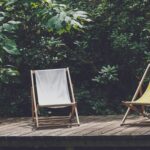Table of Contents
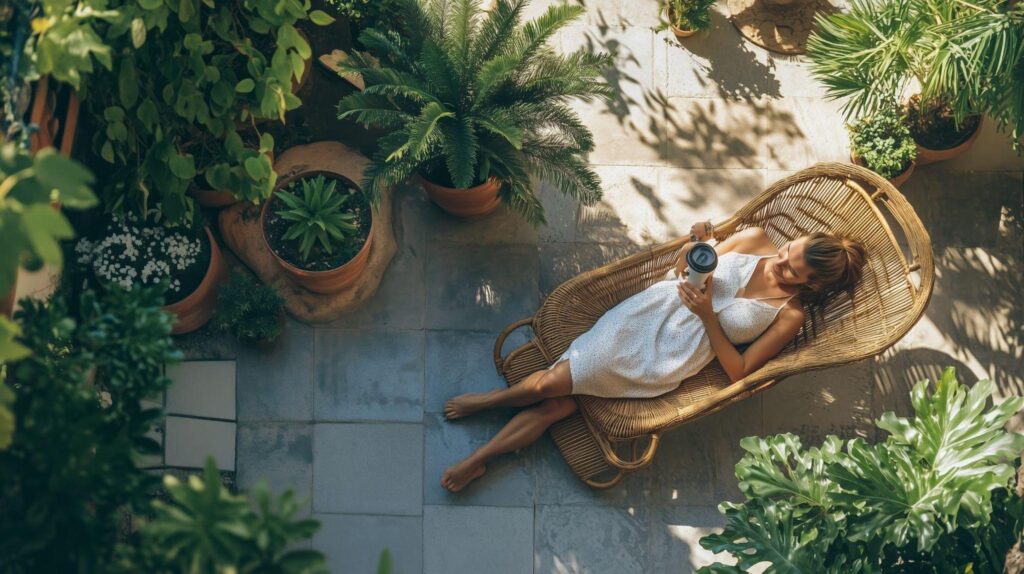
Transforming your outdoor space into a personal sanctuary doesn’t require an extravagant budget or professional designers. With thoughtful planning and strategic elements, even modest areas can become rejuvenating retreats that draw you outdoors and restore your spirit. Here’s the ultimate guide to creating a relaxing outdoor retreat.
Define Your Relaxation Style Before Buying Anything
Before purchasing a single plant or piece of furniture, clarify what “relaxation” truly means for you. Some people unwind through active engagement with nature—gardening, birdwatching, or tending a small water feature. Others seek passive relaxation—comfortable seating for reading, quiet conversation, or simply watching the clouds drift by.
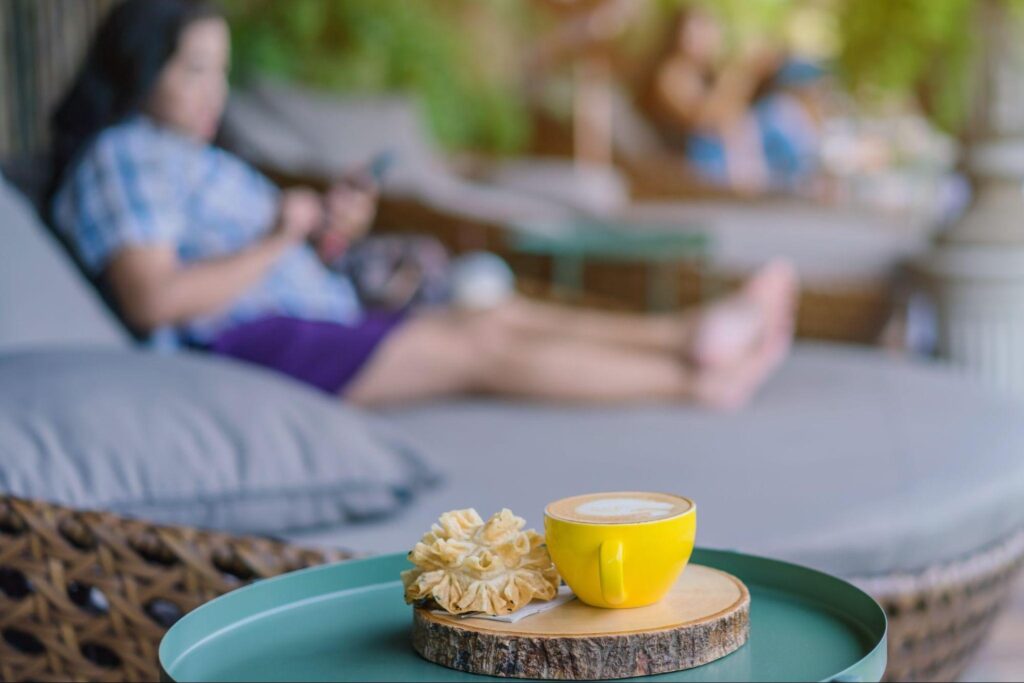
This personal definition shapes every subsequent decision. If you relax by hosting intimate gatherings, prioritize conversational seating arrangements and ambient lighting. If solitary reading recharges you, a single comfortable chaise with proper shade becomes more important than extensive seating options.
Consider seasonal patterns as well. Morning coffee enthusiasts need different orientations and shelter considerations than evening wine sippers. Be honest about when and how you’ll use the space rather than creating an aspirational retreat that looks perfect but doesn’t align with your true relaxation habits.
Create an Enclosure That Generates Psychological Comfort
The most relaxing outdoor spaces provide a sense of gentle enclosure that creates psychological safety without claustrophobia. This “shelter with prospect” allows you to relax while maintaining views of your surroundings—a human preference dating back to our earliest ancestors.
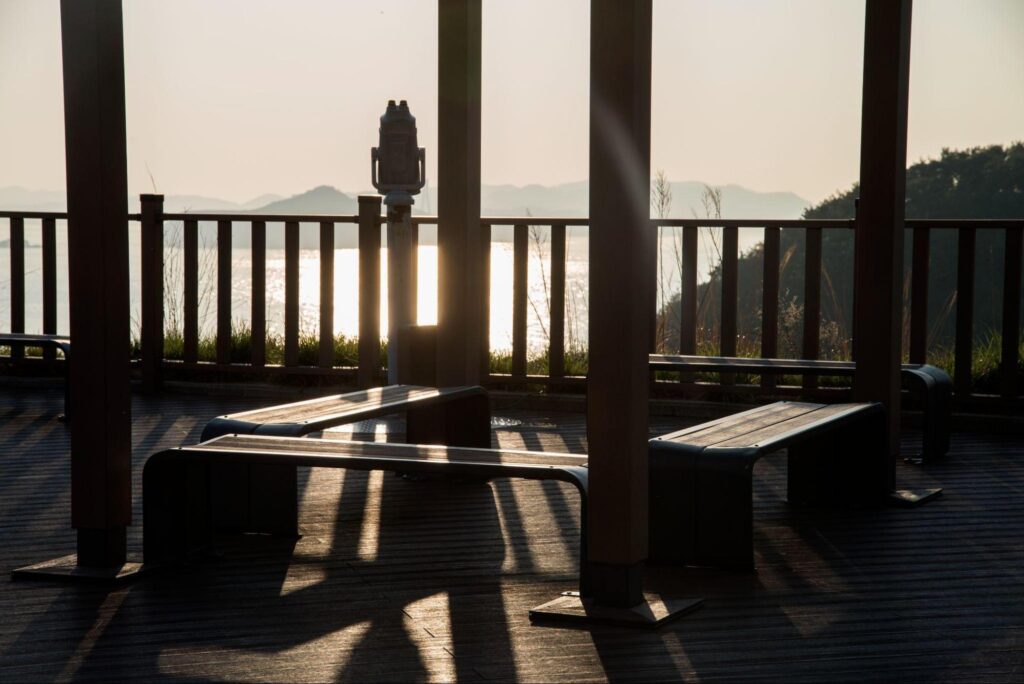
Vertical elements create this crucial sense of enclosure. Consider pergolas that filter light while defining overhead boundaries. Living walls of plants provide privacy screening without the stark appearance of fencing. Even strategically placed large containers with tall plants can create room-like divisions in open spaces.
The goal isn’t complete isolation but rather defined transitions that separate your retreat from the wider world. These boundaries signal to your brain that you’ve entered a different space, triggering automatic relaxation responses as you cross these subtle thresholds into your sanctuary.
Engage Multiple Senses for Complete Immersion
True relaxation engages all senses, yet most outdoor spaces focus exclusively on visual elements. Incorporating multisensory elements creates immersive experiences that more effectively transport you away from daily concerns.
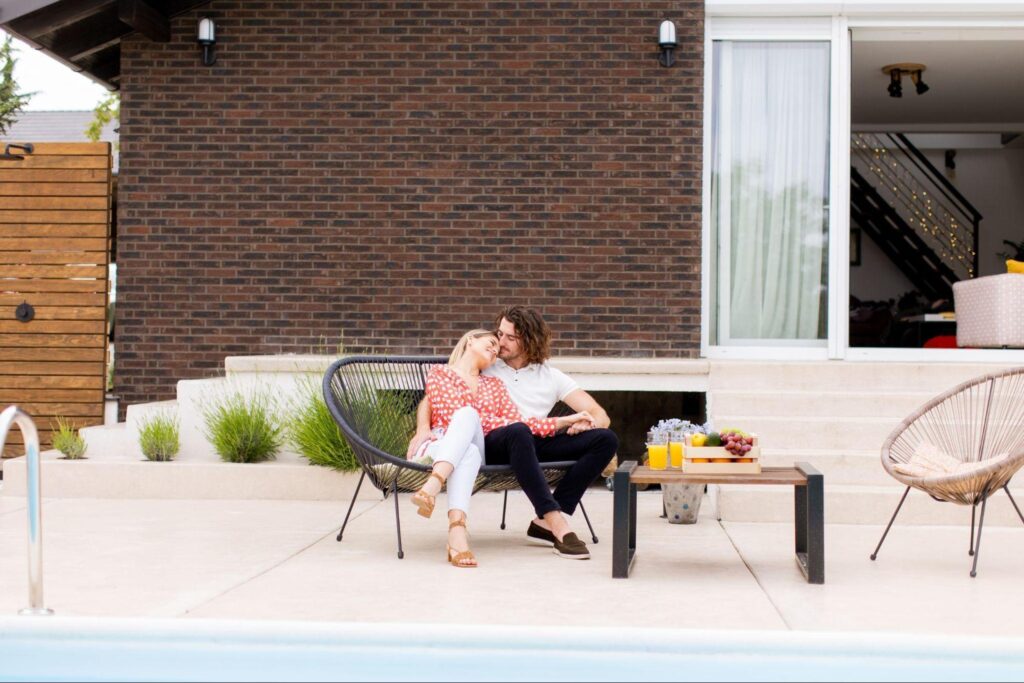
Sound plays a crucial role in relaxation environments. Water features mask neighborhood noise with gentle, consistent sounds that our brains process differently than mechanical or human sounds. Wind chimes, carefully selected for mellower tones rather than bright tinkling, provide another sound layer that signals “retreat” to your subconscious.
The fragrance creates powerful relaxation triggers when thoughtfully incorporated. Position scented plants near seating areas where gentle breezes will carry their aromatherapy properties. Consider seasonal progression—spring lilacs giving way to summer lavender, then fall witch hazel—to maintain sensory interest throughout the year.
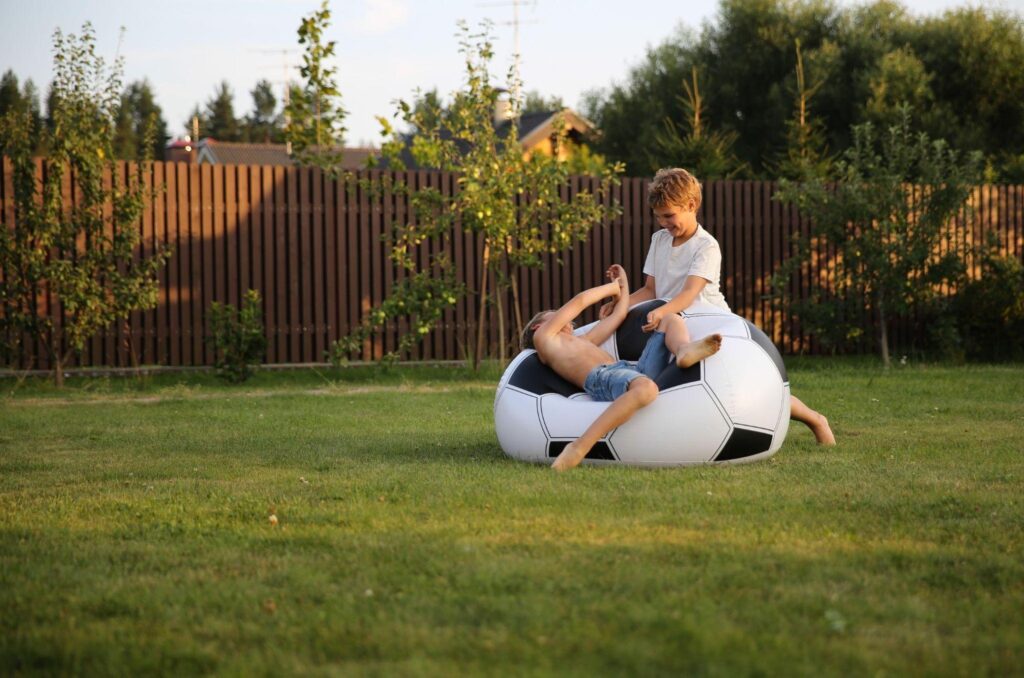
Tactile experiences often get overlooked but significantly enhance relaxation. Incorporate contrasting textures in both plantings and materials—smooth stones alongside fuzzy lamb’s ear plants, rough timber complementing sleek metal accents. These textural juxtapositions create subtle but important sensory engagement that enriches your experience.
Seating That Truly Supports Relaxation
Comfortable seating forms the foundation of any relaxation space, yet many outdoor areas feature visually appealing furniture that fails the comfort test. Prioritize function over form, selecting pieces that support extended lounging rather than just brief sitting.
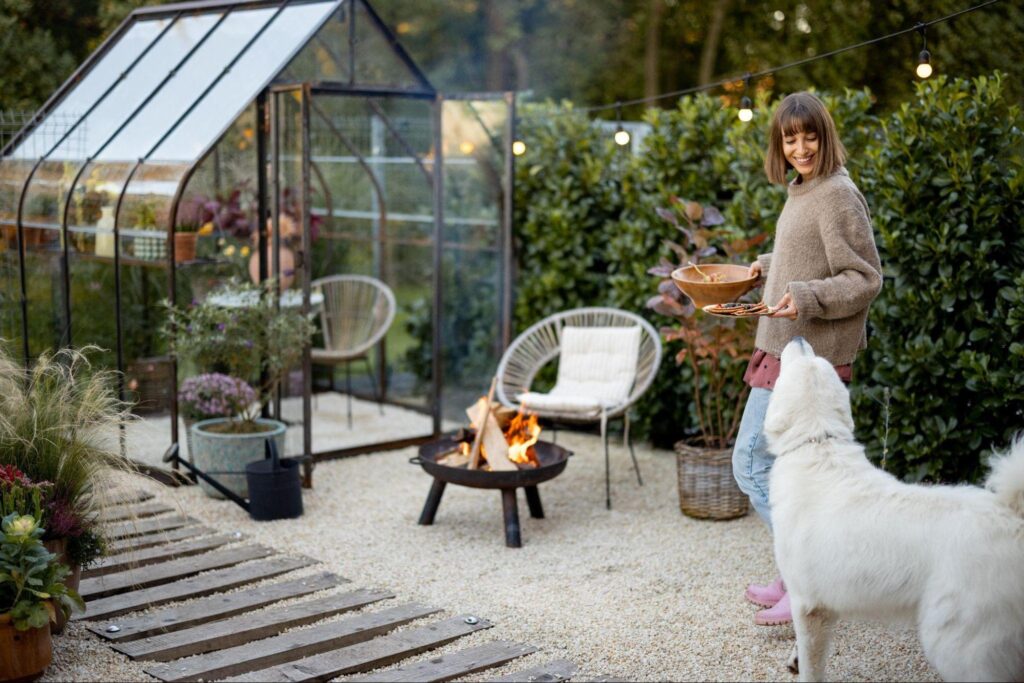
Consider how you naturally relax. Do you prefer upright positions, semi-reclined postures, or full horizontal lounging? Different relaxation styles require different support structures. Test furniture before purchasing whenever possible, sitting in positions you’ll use rather than just perching briefly on the edge.
Weather resilience matters equally. Even the most comfortable seating becomes a maintenance burden if materials can’t withstand your climate. Modern performance fabrics offer softness comparable to indoor textiles with significantly improved weather resistance. These materials justify their higher initial cost through longevity and reduced maintenance.
Create flexibility through lightweight pieces that can be repositioned as needs change. Modular components allow reconfiguration for different group sizes or activities. This adaptability ensures your retreat evolves with your relaxation preferences rather than becoming static and potentially obsolete.
The Shade Strategy That Extends Usability
Without proper shade management, even the most beautiful outdoor retreat becomes unusable during peak daylight hours. Strategic shade planning extends enjoyment hours while creating dappled light conditions that enhance both comfort and visual appeal.
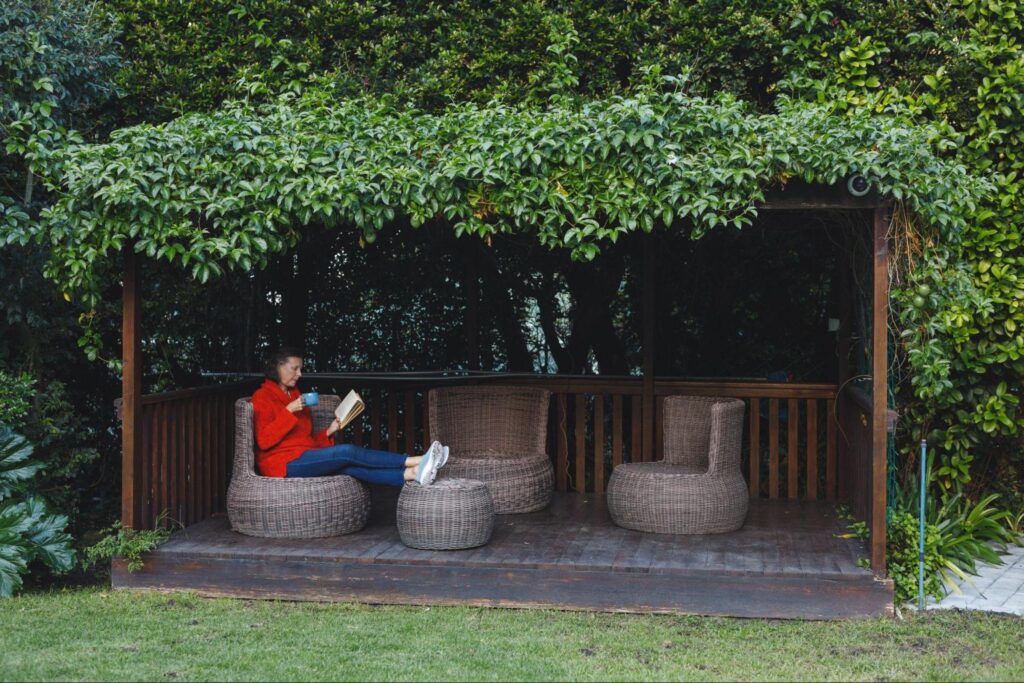
Analyze sun patterns throughout the day and across seasons before positioning permanent elements. Digital sun-tracking apps show precisely how shadows will fall in your specific location, preventing unpleasant surprises after installation. Remember that winter sun patterns differ significantly from summer, particularly in northern climates.
Layer shade solutions for maximum flexibility. Permanent structures like pergolas provide consistent coverage, while adjustable options like retractable awnings or shade sails offer adaptability to changing conditions. Even portable umbrellas serve important functions when thoughtfully incorporated into the overall plan.
Consider natural shade from strategic tree planting for long-term solutions. Deciduous trees provide summer shade while allowing winter sun penetration—perfect for four-season retreats. Though slower to establish than manufactured options, natural shade creates unique light quality and beneficial microclimates difficult to replicate with artificial structures.
Lighting That Transforms Evening Hours
Thoughtful lighting extends your retreat’s usability well into evening hours while creating entirely different atmospheric experiences from daytime use. The most effective outdoor lighting creates an atmosphere rather than simply illuminating space.
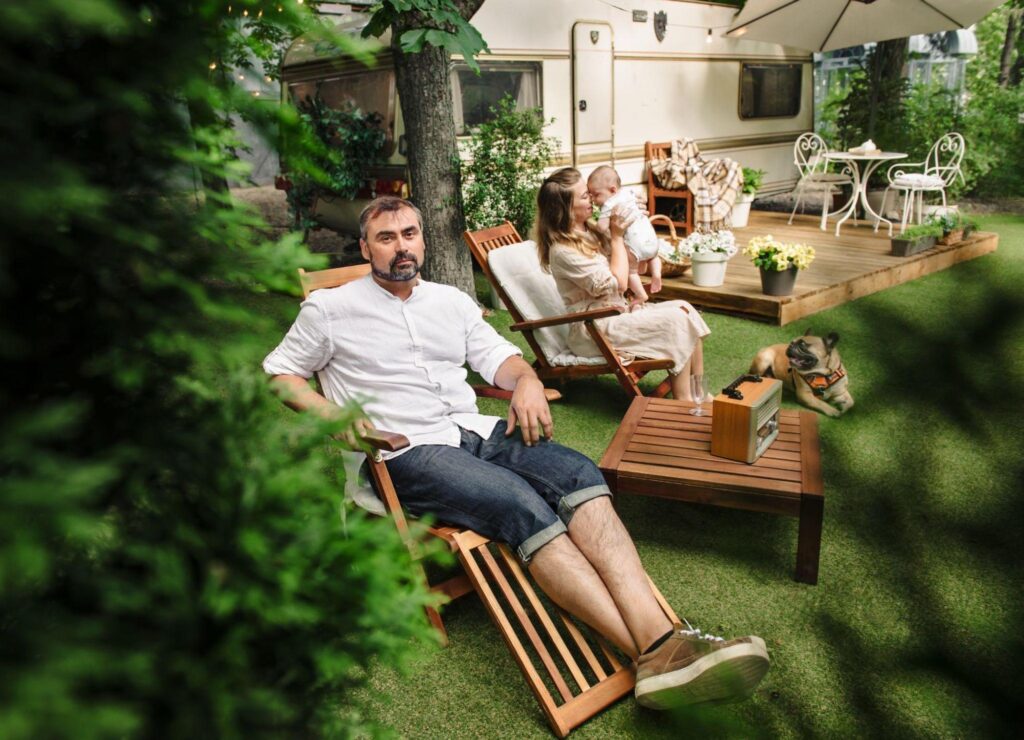
Layer multiple lighting sources at varying heights for natural-feeling illumination. Ground-level path lights provide safe navigation, mid-level sources on tables or planters create activity zones, and overhead elements deliver a gentle ambient glow. This multi-level approach mimics natural light conditions that feel inherently relaxing.
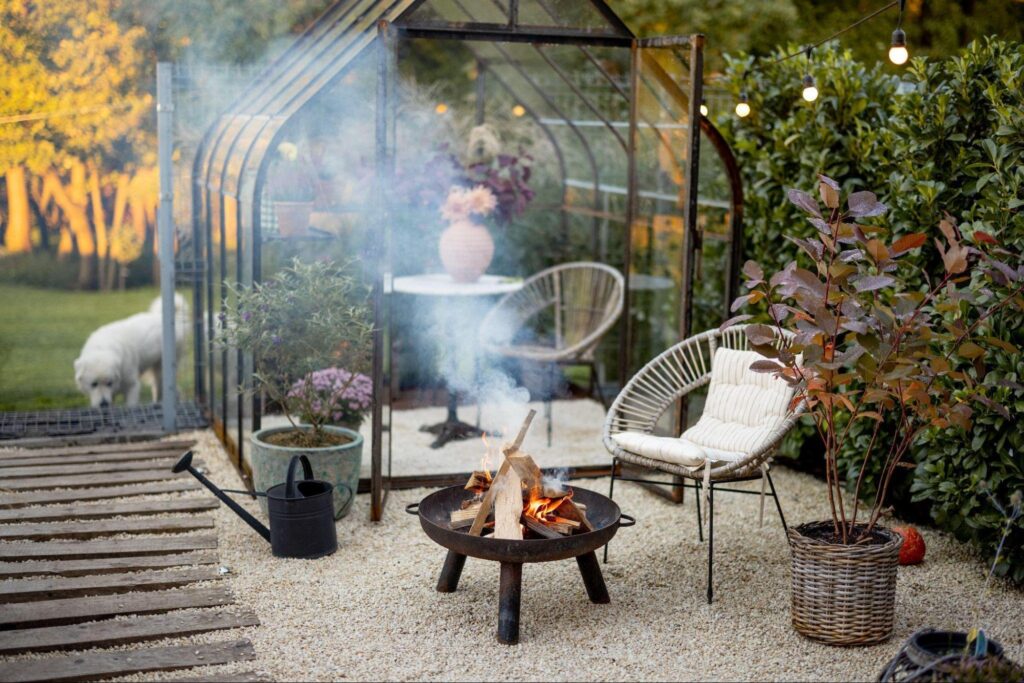
Light temperature significantly impacts relaxation potential. While cooler lights (4000K+) appear brighter and improve visibility, they create alertness rather than relaxation. Opt instead for warmer temperatures (2700-3000K) that naturally signal evening relaxation to human brains through their similarity to firelight.
Include both fixed and portable lighting for maximum flexibility. Permanent installations provide consistent illumination while candles, portable lanterns, and battery-operated fixtures allow customization for different moods and activities. This combination ensures your retreat’s evening atmosphere adapts to your changing relaxation needs.
Plants That Create Sanctuary Feeling
Beyond mere decoration, plants actively contribute to relaxation through numerous psychological and physiological mechanisms. Strategic selection and placement amplify these benefits while reducing maintenance requirements that might otherwise undermine relaxation.
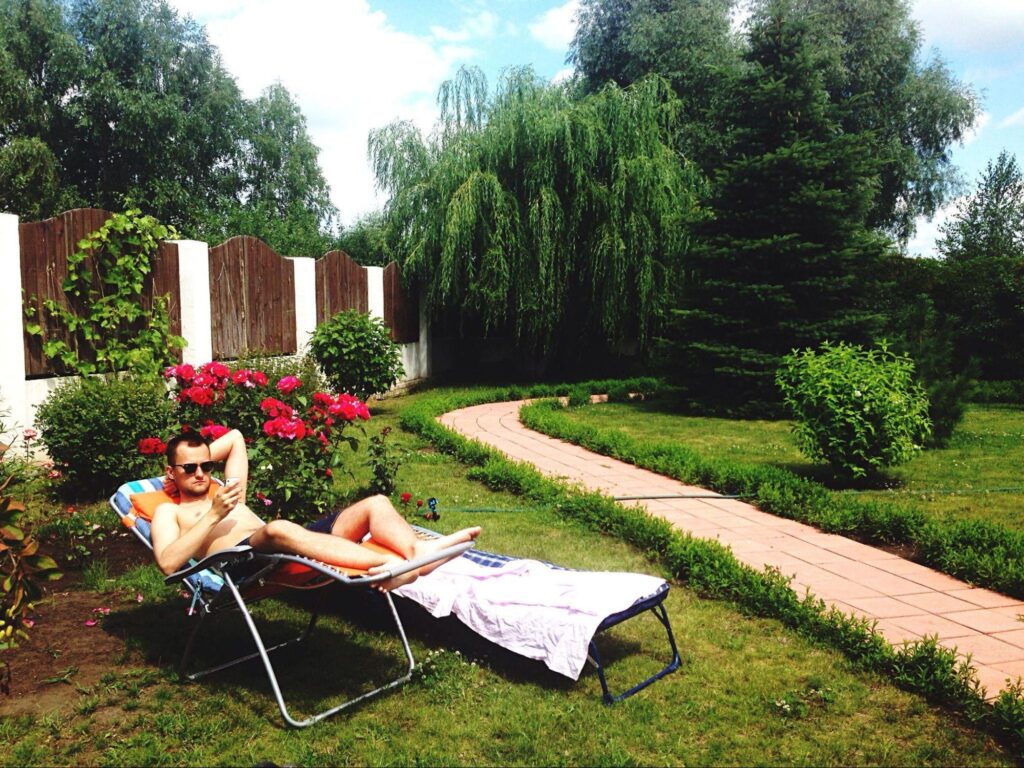
Focus on the psychological impact of different plant forms. Arching branches and soft, flowing shapes naturally signal safety to human brains, while sharp, spiky forms trigger subtle alert responses. For maximum relaxation, emphasize rounded forms, gentle textures, and non-aggressive growth habits in areas closest to seating.
Consider movement characteristics when selecting plants. Varieties that respond visibly to gentle breezes—ornamental grasses, aspens with trembling leaves, wind-responsive ferns—create hypnotic motion that measurably reduces stress responses. Position these motion-friendly plants where prevailing breezes will animate them regularly.
Plant maintenance requirements deserve equal consideration. Even beautiful plantings undermine relaxation if they generate constant work anxiety. Be realistic about your maintenance commitment and select accordingly. Low maintenance doesn’t mean no maintenance—all plants require some care, but proper selection dramatically reduces time investment.

Hi, I’m Christian, a 43-year-old father of two and a lifelong DIY enthusiast. My workshop is where I spend countless hours experimenting, upgrading, and fine-tuning. Sharing my experiences and practical advice is my way of helping others create homes they love.


